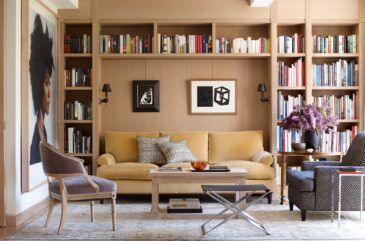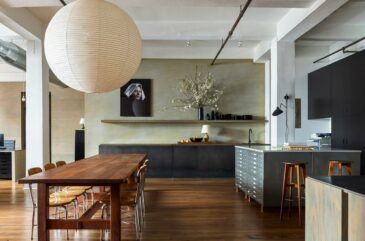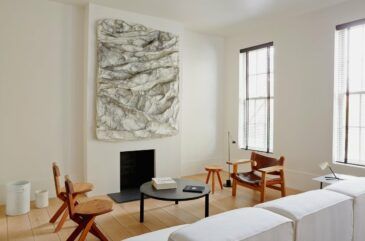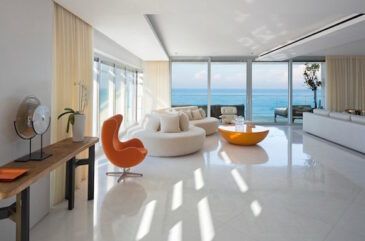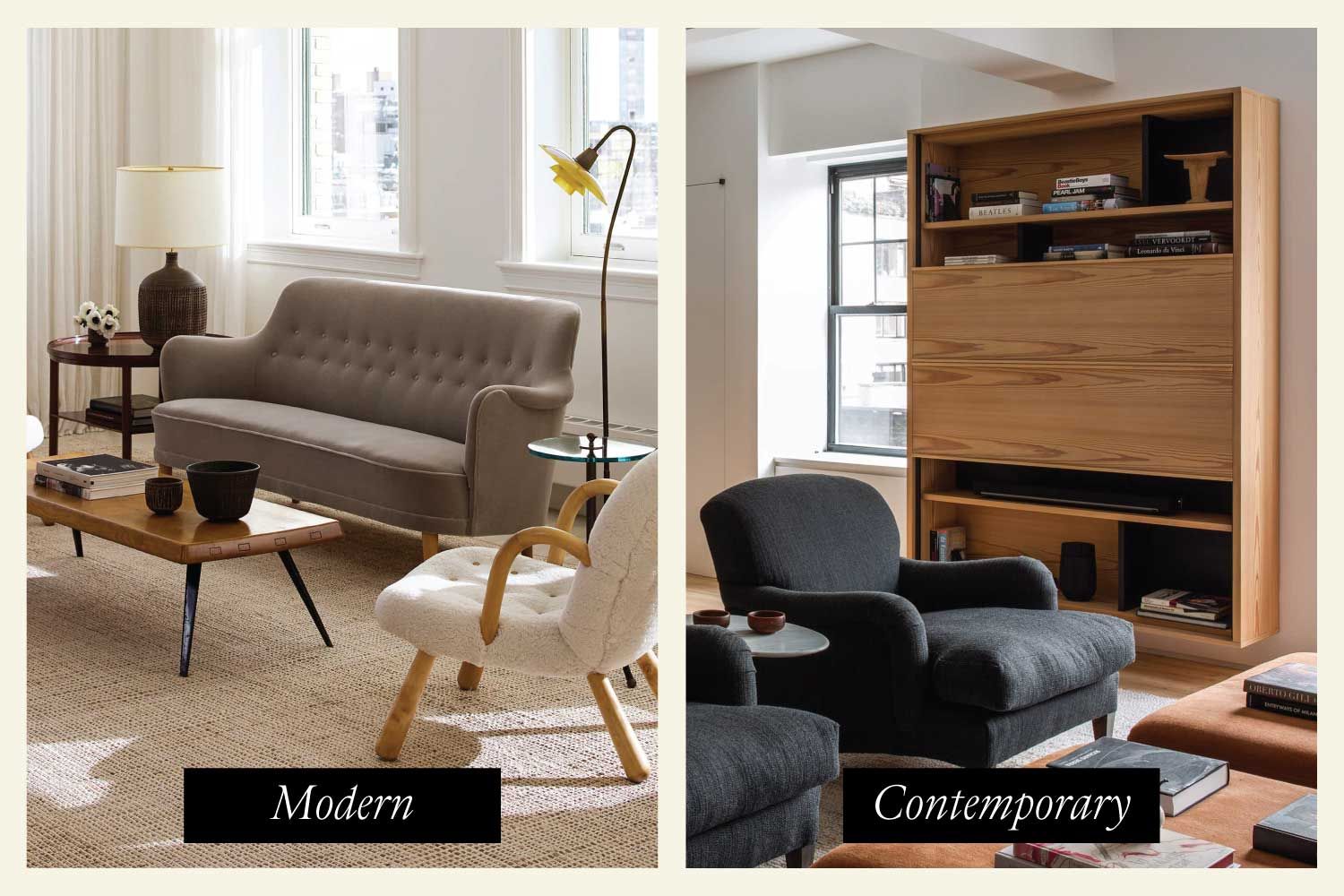
Although the terms contemporary and modern are sometimes used interchangeably, they are not synonymous in the design world. They denote separate interiors and furniture styles, each with its own nuances.
Here, we untangle the contemporary vs. modern confusion by defining both styles, listing their unique characteristics and providing visual examples.
What Is the Difference between Modern and Contemporary Design?
Modern refers to designs created in the early to mid-20th century, with distinctions drawn between those made pre- and postwar. Its characteristics include simplicity, functionality and clean lines.
Contemporary, on the other hand, refers to present-day designs. The difficulty is that what qualifies as “present-day” changes over time. The term contemporary is thus fluid and hard to pin down. Here, we identify several characteristics of contemporary design that reflect today’s trends.
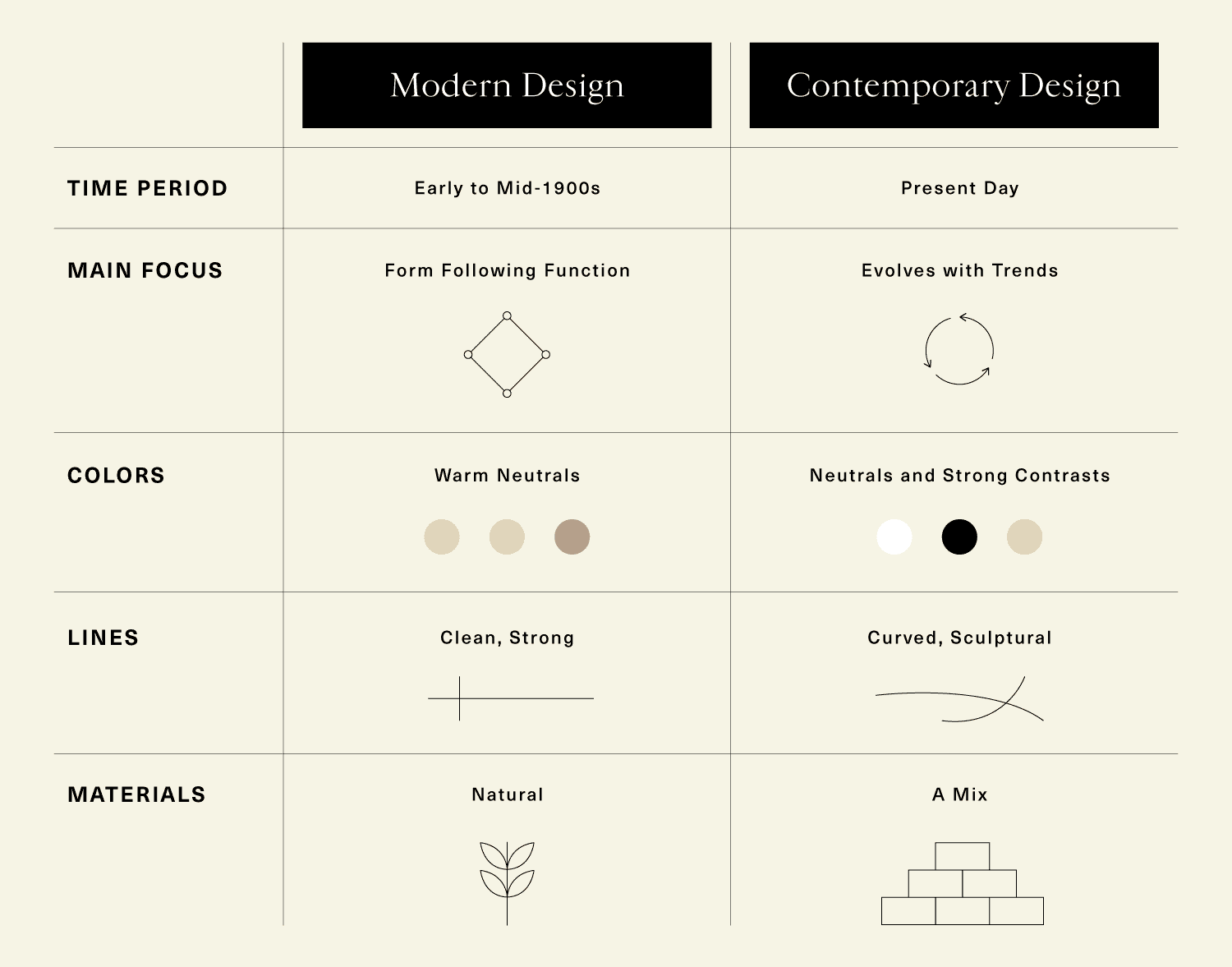
Below, we break down the differences further.
Characteristics of Modern Design
The modern style of interior design developed in the early 20th century. Adhering to the precept that form follows function, it was influenced by German Bauhaus and Scandinavian design, as well as the modern art movement. Famous modern designers include Charles and Ray Eames and Florence Knoll.
The modern style’s core characteristics are functionality, minimal decoration, neutral colors and clean lines. Although 1920s and ’30s design exhibited these features, the term modernism is most often applied today to the style of the 1950s and ’60s, known as mid-century modern.
Modern design characteristics include:
- Warm neutral and earthy colors
- Monochrome palettes, with primary accents
- Clean lines
- Balance and symmetry
- Form following function
- Natural materials, such as unpainted wood and exposed brick
Now that we’ve identified some markers of modern design, we’ll go through some examples.
Modern Furniture
Modern furniture highlights minimalist features and displays the movement’s emphasis on practicality combined with timeless design.
As noted above, modern most often refers to the style that emerged in the 1950s and ’60s and continues to influence design today. Mid-century modern furniture is commonly made using wood and linen and is characterized by organic forms with subtle curves. The pieces are often placed away from the walls, to accentuate the open space that typifies modernist floor plans.
The classic Charles & Ray Eames LCW chair exemplifies the simple lines and curved forms typical of modern design and adds a natural wooden texture to a room’s decor.
Examples of Modern Design
To visualize how modernism can be deployed in a room, take a look at the following interiors, which have been designed in the modern style using a variety of furniture and decor pieces.
This pied-à-terre in New York City showcases the symmetry and balance of modern design.
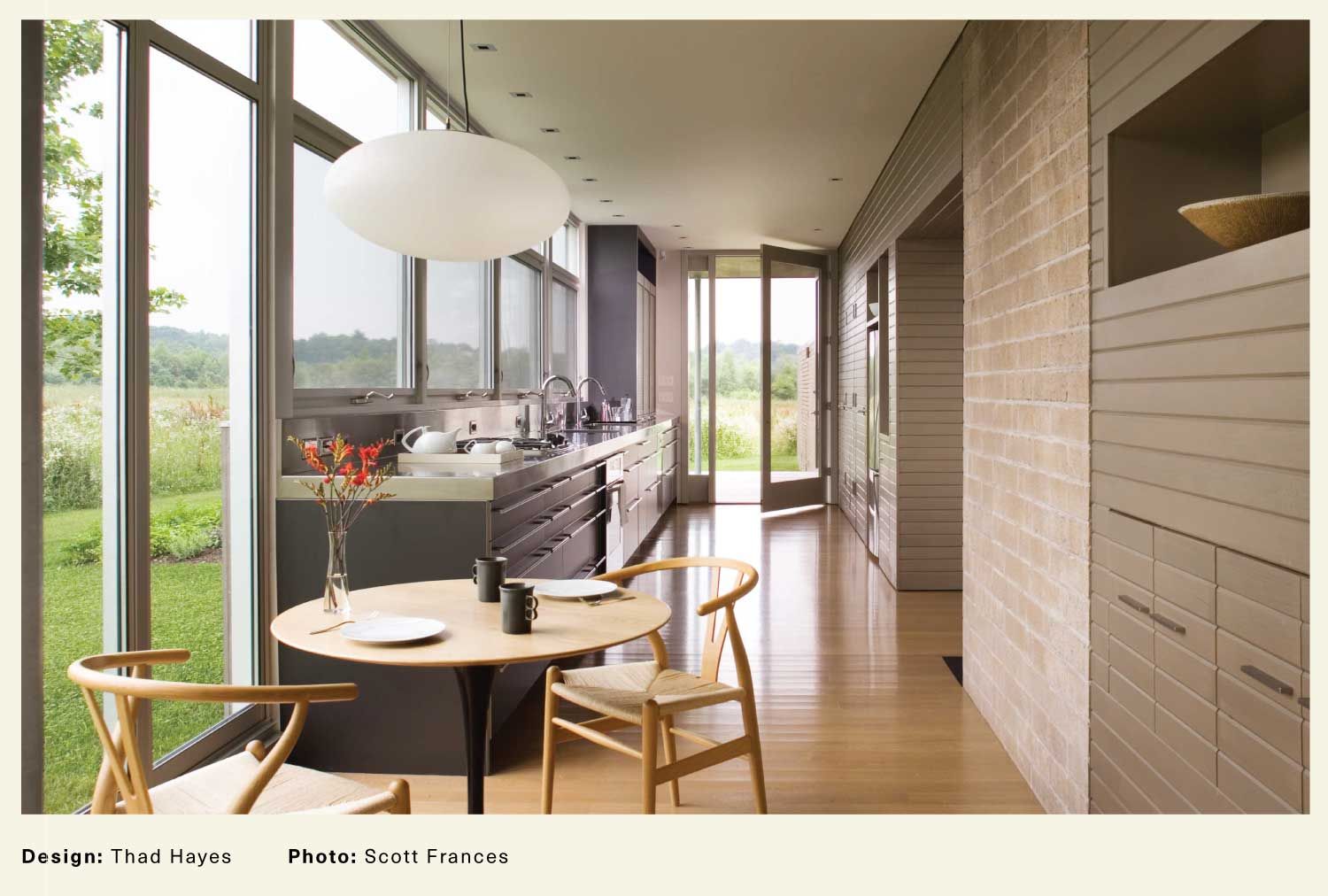
This open and airy New England kitchen exhibits the minimalism and the layering of warm neutrals typical of modernism.
Characteristics of Contemporary Design
Although influenced by past movements like Art Deco and minimalism, contemporary design is the style of the present, and so is constantly changing.
By definition, contemporary is fluid and can’t be tied to a particular period. We have chosen as the line of demarcation between it and previous styles the year 2000, which is when the digital revolution began to truly make a mark on design, whether as something to be embraced or reacted against. Other influences on contemporary design include environmentalism and globalization.
Contemporary design has many variations, reflecting whatever the current trends are. Here are some of its defining features at the present moment.
Contemporary design characteristics include:
- Neutral palettes and strong contrasts, such as blacks and whites
- Curved lines
- Cutting-edge shapes
- Mix of materials, like polished wood, metals and natural fibers
- Large windows and integration with the natural world
- Sustainable materials
Contemporary rooms are all about the cutting-edge. Below, we provide visual examples of this fluid design style.
Contemporary Furniture
Since what constitutes contemporary style changes over time, the furniture in contemporary spaces usually combines past trends with current innovations. Unlike modern pieces, contemporary ones typically prioritize comfort over functionality.
Contemporary furniture often borrows elements from past styles, particularly from modern design. Wood and other common natural materials, for instance, are used for in both contemporary and modern pieces, but the shapes of contemporary ones tend to be more abstract.
The Roly Poly chair, designed by Faye Toogood, demonstrates the abstract form characteristic of many contemporary furniture pieces.
Examples of Contemporary Design
The following interiors are excellent examples of contemporary design.
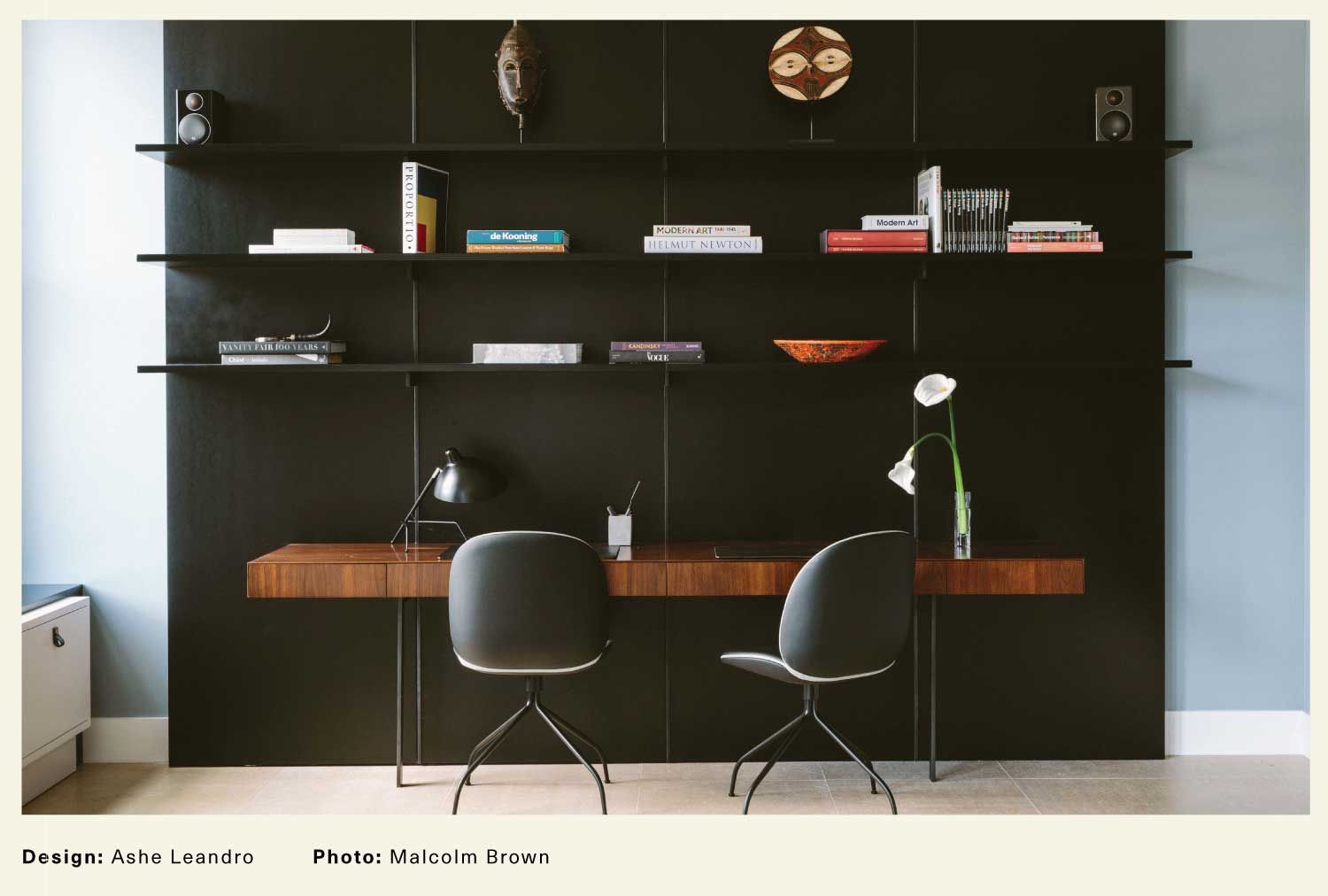
This Chelsea office contrasts a geometric gallery wall with neutral furniture.
This Park Avenue apartment mixes straight with curved, sculptural lines.
Similarities between Contemporary and Modern Design
Among the older styles that have most influenced contemporary design is modernism. It’s thus understandable that the two are often confused.
Here are some characteristics shared by contemporary and modern interior design:
- Open, airy layouts
- Smooth lines
- Neutral colors, although modern interiors tend to use warm neutrals while contemporary ones incorporate more-striking palettes
- An uncluttered, “less is more” look
- A lack of ornate embellishment
Now that you’re familiar with the similarities and distinctions between modern and contemporary interior design, you can decide which to take inspiration from in your own decor and furnish your home accordingly. For more interior design styles, check out our furniture offerings by period on 1stDibs.

